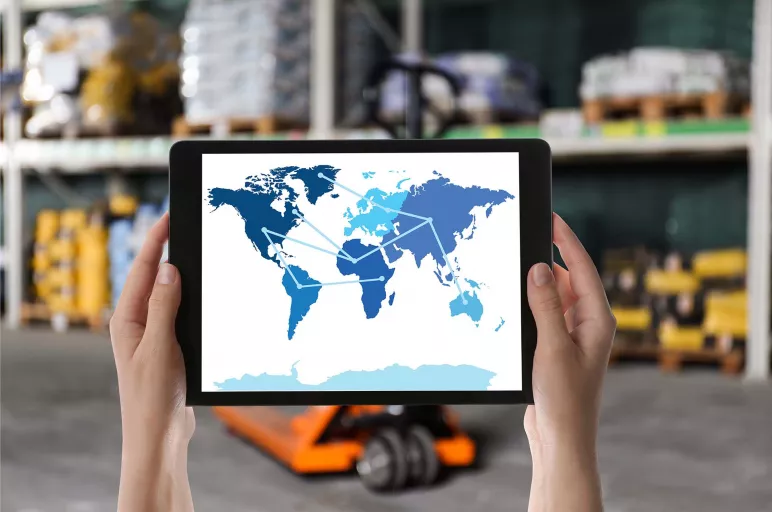
Why You Must Invest in Supply Chain Mapping
- Supply chain mapping is the all-important first step to evaluating the supply network.
- Mitigating risks and identifying key suppliers based on spend and criticality are some of the main objectives of mapping.
- Mapping is an ongoing exercise and must be done regularly with changes in the supply chain and supplier base.
November 07, 2022 | Supply Chain Strategy 4 minutes read
The last two years have seen a series of disruptions — pandemic, lockdowns, port congestions, labor shortages and sudden appearance of new variants.
If there is one lesson that businesses have learnt from these unforeseen events, it is the need to regularly monitor their supply chains. As a first step toward understanding their supply chain and identifying risks, businesses must engage in supply chain mapping.
What is Supply Chain Mapping?
Supply chain mapping is collecting information about the business’ suppliers and details of all the people involved in the supply chain. This information is then used to create a global map of the business’s supply network. For example, a company will collect and map the source of all its raw materials suppliers and shipments used in their procurement.
This information is then stored in a single data platform for ease of use and analysis.
The process of supply chain mapping is not a one-time activity. The supply chain map is continuously updated as the business gets additional information, the supplier base transforms, and the supply chain changes.
Steps and Tools Involved in Supply Chain Mapping
Mapping the business’s supply chain is the all-important first step to evaluating the supply chain. For global supply chains, the mapping required to produce a visual representation of all the stakeholders and the dependencies within the chain is a complex process. It needs to be broken down into steps.
The steps in the supply chain mapping process are:
• Identify and list all stakeholders
. Identify all the stakeholders involved in manufacturing, storing, and distributing the products. Identify and map the priority suppliers of the business based on their importance to the product. Assess where most money is spent and the materials most critical to the development of the product. The map should also list the nature of the operation provided by the entity, for example, manufacturer, service provider, raw material supplier, etc.
• Determine stakeholder relationships
After identifying and listing all the stakeholders, the next step is understanding their relationships and interdependencies. Identify what each stakeholder sells or buys and to whom/from where. This process helps gain a complete view of all the risks and bottlenecks in the supply chain.
• Determine the cost and time
The next step in the mapping process is determining the cost and the time required for each part of the supply chain. This exercise helps establish the priority areas of the supply chain.
• Identify supply chain risks
Next, analyze and list all the risks associated with each element in the supply chain. This step should be a comprehensive exercise covering all threats - operational, political, regulatory, economic, environmental, etc.
• Track the data
Understand how information and data flow through the supply chain. A smooth flow of information and data on orders, shipment details, returns, etc., is essential to managing costs and ensuring streamlined operations.
• Iterate
Repeat the above steps frequently to improve the process continuously.
The various supply chain mapping tools include:
- Cross-functional process mapping
- Flow charts
- Histograms
- Check sheets
- Cause-and-effect diagrams
- Stratification
- Pareto charts
- Scatter plots
- Control charts
Importance of Supply Chain Mapping
Supply chain mapping helps the business prepare appropriate strategies to react to disruption. For example, it helps the company prepare a backup plan for a supplier located in an earthquake-prone zone.
Supply chain mapping also prepares the business for other eventualities such as a sudden surge in demand. Mapping gives deeper understanding of the cost and the interdependencies — providing an edge over competitors who might not have this information.
Pros and Cons of Supply Chain Mapping
Pros
• Transparency
Being transparent with customers about the firm’s business practices builds trust and loyalty. For example, when customers know that their shirt company does not source cotton from a supplier who uses child labor to harvest cotton, it wins the firm their trust and loyalty.
• Identification of priority areas
Mapping the supply chain helps identify the supply chain elements where the most value is added or lost. This analysis helps the business determine where it needs to prioritize its attention based on the supply chain elements with the most business impact.
• Risk planning
Supply chain mapping helps identify the risks involved and to have a risk mitigation plan in place to minimize or eliminate their impact.
• Supply chain strengthening
When suppliers and businesses in the supply chain understand their roles and interdependencies, it improves the robustness of the supply chain.
• Enhanced efficiency
Mapping identifies bottlenecks, potential delays, etc., and enables the business to be better prepared to handle these difficulties - improving overall system efficiency.
Cons
• Data security
. Supply chain mapping requires sharing information and data with supply chain partners, who could compromise the security of data if there is a data breach or a cyberattack.
• Time and cost
Preparing a supply chain map for the business requires significant time, effort, and resource investments.
Conclusion
Growing uncertainty has compelled businesses to identify risks and stay prepared for disruption. As a first step, they must engage in supply chain mapping.
Businesses can combine the data obtained from supply chain mapping with analytics and intelligence to efficiently manage their supply chains and business operations.



